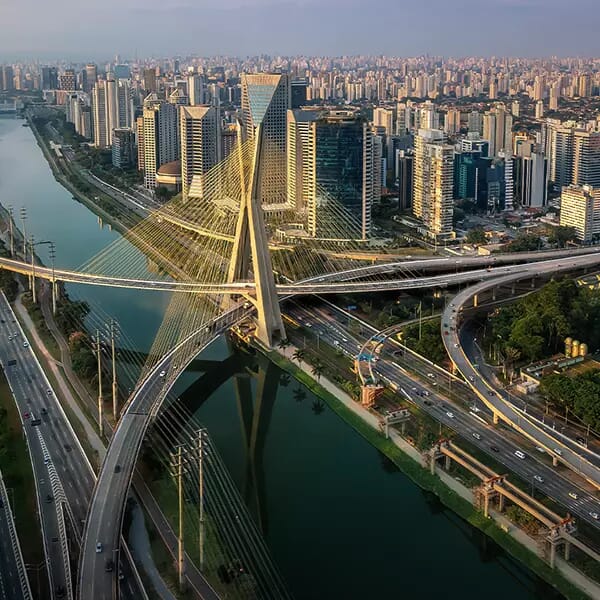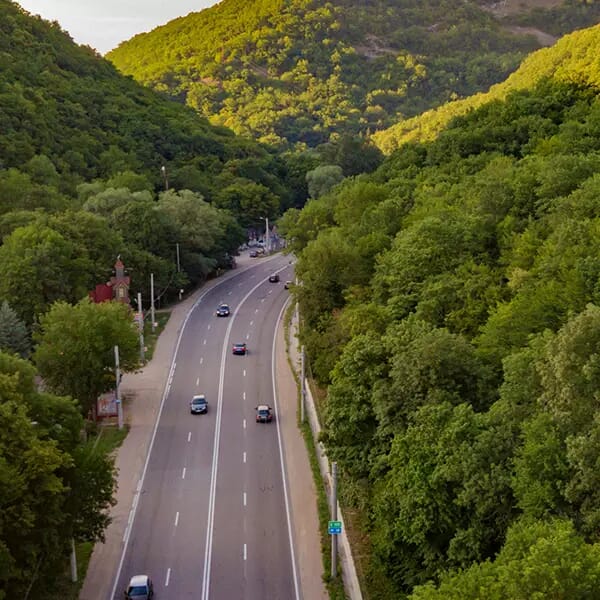GRI interviews infra investors: Hans-Martin Aerts (APG)
The Indian infrastructure sector is mature compared to other markets, says Head of Infra Investments for Asia Pacific.
November 13, 2018Infrastructure
GRI Hub is interviewing a number of major investors about the current scenario and prospects for infrastructure investments in India. This will be one of the main topics under discussion at the Infra India GRI 2019, which will take place on January 29th and 30th in Delhi.
Here's what Hans-Martin Aerts, Managing Director and Head of Infrastructure Investments for Asia Pacific at APG and GRI Club member, says:
What is the investment potential in the infrastructure sector in India in the next 12-24 months?
We are seeing a host of opportunities in the infrastructure sector in India. On one hand, there is a large pool of operational assets held on the balance sheets of developers who need to deleverage and recycle capital. On the other hand, there are a lot of infrastructure projects that require last-mile funding in order to achieve project completion.
In your opinion, does the Indian infrastructure offer good opportunities in terms of risk-return?
We believe India provides for compelling investment opportunities which allow an investor to achieve attractive risk-adjusted returns. It just takes a lot of time and effort to identify these opportunities and to successfully close them.
Which Indian infrastructure segments seem to be more attractive in the current scheme of things?
Our investment approach for Indian infrastructure is somewhat different from the typical one. A few years ago, we saw this opportunity in the mezzanine space. In markets where there is a mismatch between demand and supply of capital, a unique opportunity exists for a mezzanine investment strategy. We seek to capitalize on the large funding requirement and the availability of attractive pools of assets with predictable cash flow profiles. We have been quite active in the renewable energy space. Developers were scrambling for new funding to build out their portfolio as quickly as possible. Mezzanine capital is quicker obtained as you don’t have to fully bridge any valuation gap. It also allows a developer to retain its equity interest and preserve most of the upside for himself. For us, there are a number of advantages associated with this strategy. First of all, we are able to achieve more attractive risk-adjusted returns. Even if you wouldn’t adjust for risk, then the returns are still higher than what we are currently seeing for straight equity. Another advantage is that there are no issues in terms of cash repatriation and there is less tax leakage.
Do you see any kind of obstacles when it comes to global players investing in the Indian infrastructure? How is it possible to face them?
The biggest challenge is to find the right partner. We believe it is crucial to team up with the right local partner in order to mitigate the risks associated with investing in an emerging market like India. We seek to team up with best-in-class, local well-aligned partners to create long-term partnerships. Alignment of interests, adherence to our environmental, social and governance standards and strong track record in project execution and management are all important criteria for us when assessing potential partners. We are spending as much, if not more, time on identifying the right partners as we do on selecting the right investment opportunities.
Do you believe local investors have any kind of advantage or disadvantage when investing in the Indian infrastructure when compared to global investors?
I believe they do. Having a local presence allows you to source deals and manage existing investments in a more active and efficient manner given that you are closer to the assets, your counterparties and the industry and capital market network in general. Furthermore, local investors have no issues in terms of cash repatriation and face less tax leakage.
How do you compare the Indian infrastructure sector to other countries – specially emerging ones – in terms of attractiveness for investments?
The Indian infrastructure sector is relatively mature compared to other emerging markets. It has a long track record of private sector involvement. In the long term, we view India as an attractive infrastructure market with favorable growth dynamics. However, the market is clearly moving in cycles and we are seeing some headwinds in the short term.
In your opinion, what would be the turning point for Indian Infrastructure investments after the highs and lows the sector has faced?
It is key for private investors to know the circumstances in which they are making the investment and that unforeseen changes will be limited. A stable political climate, a predictable regulatory regime, and well-functioning financial system will reduce risks and should lead to better returns for investors.
Here's what Hans-Martin Aerts, Managing Director and Head of Infrastructure Investments for Asia Pacific at APG and GRI Club member, says:
What is the investment potential in the infrastructure sector in India in the next 12-24 months?
We are seeing a host of opportunities in the infrastructure sector in India. On one hand, there is a large pool of operational assets held on the balance sheets of developers who need to deleverage and recycle capital. On the other hand, there are a lot of infrastructure projects that require last-mile funding in order to achieve project completion.
In your opinion, does the Indian infrastructure offer good opportunities in terms of risk-return?
We believe India provides for compelling investment opportunities which allow an investor to achieve attractive risk-adjusted returns. It just takes a lot of time and effort to identify these opportunities and to successfully close them.
Which Indian infrastructure segments seem to be more attractive in the current scheme of things?
Our investment approach for Indian infrastructure is somewhat different from the typical one. A few years ago, we saw this opportunity in the mezzanine space. In markets where there is a mismatch between demand and supply of capital, a unique opportunity exists for a mezzanine investment strategy. We seek to capitalize on the large funding requirement and the availability of attractive pools of assets with predictable cash flow profiles. We have been quite active in the renewable energy space. Developers were scrambling for new funding to build out their portfolio as quickly as possible. Mezzanine capital is quicker obtained as you don’t have to fully bridge any valuation gap. It also allows a developer to retain its equity interest and preserve most of the upside for himself. For us, there are a number of advantages associated with this strategy. First of all, we are able to achieve more attractive risk-adjusted returns. Even if you wouldn’t adjust for risk, then the returns are still higher than what we are currently seeing for straight equity. Another advantage is that there are no issues in terms of cash repatriation and there is less tax leakage.
Do you see any kind of obstacles when it comes to global players investing in the Indian infrastructure? How is it possible to face them?
The biggest challenge is to find the right partner. We believe it is crucial to team up with the right local partner in order to mitigate the risks associated with investing in an emerging market like India. We seek to team up with best-in-class, local well-aligned partners to create long-term partnerships. Alignment of interests, adherence to our environmental, social and governance standards and strong track record in project execution and management are all important criteria for us when assessing potential partners. We are spending as much, if not more, time on identifying the right partners as we do on selecting the right investment opportunities.
Do you believe local investors have any kind of advantage or disadvantage when investing in the Indian infrastructure when compared to global investors?
I believe they do. Having a local presence allows you to source deals and manage existing investments in a more active and efficient manner given that you are closer to the assets, your counterparties and the industry and capital market network in general. Furthermore, local investors have no issues in terms of cash repatriation and face less tax leakage.
How do you compare the Indian infrastructure sector to other countries – specially emerging ones – in terms of attractiveness for investments?
The Indian infrastructure sector is relatively mature compared to other emerging markets. It has a long track record of private sector involvement. In the long term, we view India as an attractive infrastructure market with favorable growth dynamics. However, the market is clearly moving in cycles and we are seeing some headwinds in the short term.
In your opinion, what would be the turning point for Indian Infrastructure investments after the highs and lows the sector has faced?
It is key for private investors to know the circumstances in which they are making the investment and that unforeseen changes will be limited. A stable political climate, a predictable regulatory regime, and well-functioning financial system will reduce risks and should lead to better returns for investors.



